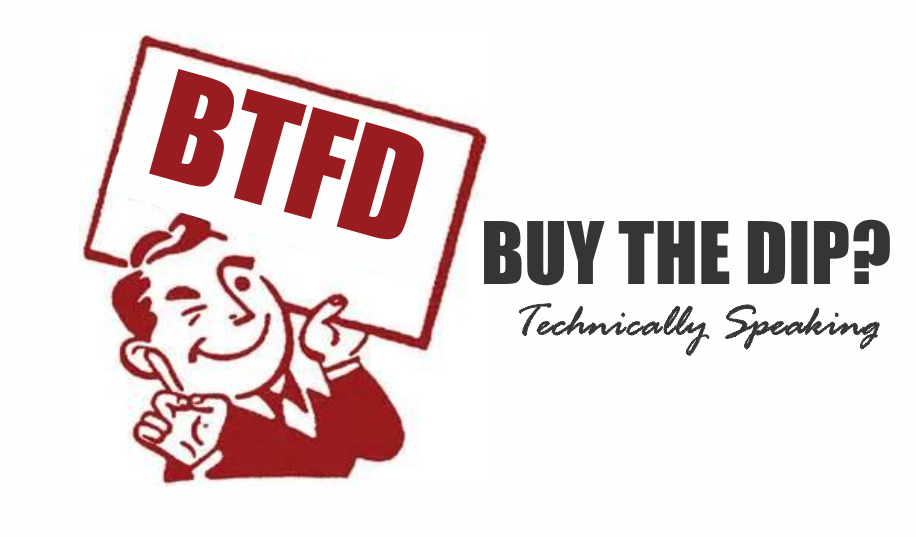Key Points
- After a torturous period of flirtation, the Dow finally crosses 20k
- Individual sentiment has become less bullish, while other measures show highly elevated optimism
- Today’s extremely low volatility isn’t likely to persist, but the bull market is
The Dow's flirtation with 20k went on for weeks, with the financial networks breathlessly reporting on every tick as it approached the milestone—subjecting them to much lighthearted ridicule on Twitter and the like. Then came last Wednesday when it finally broke through—somewhat quietly, given that it happened right at the market’s open. I've never been one to put much emphasis on round number milestones for any of the indexes, and have been pleased that it hasn't appeared that our investors have been making decisions based on that level being surpassed.
But perhaps we're being too hasty writing it off as a non-event. We've spilled much ink on the lack of retail investor enthusiasm which has accompanied this entire near-eight year bull market. Perhaps the attention around Dow 20k might wake some investors up from their slumber atop low-yielding cash.
Dow 10k redux?
According to Ned Davis Research (NDR), this was one of the longest stretches for the Dow to break a round number (and remember, as the numbers get higher, the percentage spread between them is lower and therefore easier to exceed). The Dow took 29 days to climb the last 1% to 20k—the ninth longest period for round numbers and the longest since Dow 4k in February 1995. Once the Dow broke through round numbers historically, it tended to outperform its long-term averages for up to a year later.
The threshold has brought comparisons to the first time the Dow crossed 10k in March 1999. We now know that the market was less than a year from its secular peak in 2000.As noted by NDR, a few data points suggest that Dow 20k does not represent an impending secular peak. First, the Dow was more expensive in 1999 (with a P/E of 25 vs. under 21 today). Second, the market’s breadth (A/D, or advances/declines) had already begun to deteriorate by March 1999.Currently, the NDR All-Cap A/D Line is at a 23-year high. The average stock—and therefore the broad market—is healthier at Dow 20k than at Dow 10k.
Investor sentiment remarkably fickle
Investor sentiment has become more fickle during this bull market—quite a bit more volatile than the market's underlying fundamentals. That said there's no denying that investors quickly became enamored with stocks in the immediate aftermath of the presidential election. But that optimism eased just as quickly recently, based on some measures of investor sentiment—surprising perhaps given the hype surrounding Dow 20k.
Below are a handful of sentiment indexes, with which some readers might be quite familiar. Most telling in terms of how fickle sentiment can be is the American Association of Individual Investors (AAII) survey, seen in the first chart below. With only a brief recent period of consolidation of the market’s sharp prior gains, sentiment came off the boil quite quickly.
Source: American Association of Individual Investors (AAII), FactSet, as of January 27, 2017.
Individual investors are often referred to as the "dumb money" and typically a contrarian indicator (we of course always think of our investors as the smart money). SentimenTrader just did an interesting look at times when individual investor optimism had declined markedly, but when other measures of sentiment remained in elevated optimistic territory. Some of those measures are seen below, including Investors Intelligence Advisors Sentiment (measuring the opinions of newsletter writers), the Conference Board’s measure of consumers' optimism about stocks, and National Association of Active Investment Managers' (NAAIM) index measuring the exposure to stocks by mutual funds and exchange-traded funds.
Individuals vs. "everyone else"
Individual investors have suddenly become much less bullish while "everyone else" is displaying some of the most optimistic views in years. The Conference Board (CB) Stock Market Confidence survey has poked into "excessively optimistic" territory for the first time since 2003. And both Investors Intelligence and NAAIM are at or above thresholds denoting an optimistic extreme.
Source: FactSet, as of January 20, 2017.
Source: FactSet, The Conference Board, as of December 31, 2016.
Source: National Association of Active Investment Managers (NAAAIM), as of January 25, 2017. The NAAIM Exposure Index represents the average exposure to US Equity markets reported by its members.
Contrary to "contrarianism" though, more recently it's been better to be a seller along with individuals when they became more pessimistic relative to everyone else; and vice versa. That hasn’t always been the case—individuals were historically the ultimate contrarian indicator at extremes. Perhaps individual investors have such strong muscle memory from the savages of the financial crisis era that they’ve become more quickly cautious when prices are rising? Assuming the pattern continues, it suggests that individual investors may be right in expecting a near-term pullback.
VIX showing too much complacency?
Another market-based measure of sentiment is the VIX Index, measuring the market's short-term volatility.For the first time in more than two-and-a-half years, the VIX is now below 11, as you can see in the chart below. According to Bespoke Investment Group (B.I.G.), in the history of the VIX going back to 1990, there have only been 70 prior days when the VIX closed below 11. In addition, since the election, the VIX hasn’t closed above 15—a streak that’s now at 54 trading days and counting.
Since 1990 there have been 10 prior periods when the VIX closed below 15 for 50 or more consecutive trading days. Here’s what happened thereafter:
- Over the following month the S&P 500 averaged a decline of -0.2% (median +0.9%), with gains six out of 10 times.
- Over the following three months, the S&P 500 averaged a gain of +0.2% (median +0.1%), with gains five out of 10 times.
- Over the following six months, the S&P 500 averaged a gain of +4.1% (median +3.8%), with gains eight out of 10 times.
- Over the following year, the S&P 500 averaged a gain of +10.5% (median +9.2%), with gains nine out of 10 times.
Source: FactSet, as of January 27, 2017.
It's often said that a low VIX is a contrary indicator for the market, but more than anything it's a coincident inverse indicator of market returns. When the VIX falls, stocks tend to rise and when the VIX rises, stocks tend to decline.
Fund flows highlight investor skittishness
The above-cited sentiment indicators are a mix of attitudinal and behavioral measures. Another behavioral measure of sentiment—arguably the most popular—is fund flows (both mutual funds and exchange-traded funds). As you can see below, domestic equity fund flows have been mixed since the post-election rally began—spiking in the immediate aftermath of the election, but sputtering since then.
Source: Investment Company Institute, as of January 20, 2017.
And on a cumulative net basis (the yellow line in the chart below), it's clear that there is a very long runway ahead before U.S. fund flows get anywhere near back to positive territory.
Source: Investment Company Institute (ICI), as of November 30, 2016. Chart plots domestic equity net new cash flow.
Bull market celebrates its 95th month
Finally, I want to put the latest surge into a longer-term context. I get a lot of pushback on my consistently-held view that what began nearly eight years ago is an ongoing "secular" bull market, which could still have a ways to go.
The bull market is 95 months old, prompting B.I.G. to put a couple of interesting charts together on the topic. As you can see in the first chart below, its post-election rally has taken the S&P 500’s total return to 260%. Although that's in rarified air, in the past when the market lifted to that level, it’s had more oomph left in it (except for the late-1930s).
Source: Bespoke Investment Group (B.I.G.), as of December 31, 2016.
In the second chart below, you can see a break-down by time period of the recent era to see how it compared to the historical averages. Only for the five-year period has this bull market's annualized return exceeded the long-term average; the rest suggest this bull still has legs.
Source: Bespoke Investment Group (B.I.G.), 1935-December 31, 2016.
In sum, although some measures of investor sentiment have been elevated to "froth" territory, individual investors—who have become more prescient since the financial crisis—have tempered their enthusiasm. Volatility is extremely low, which does suggest the market could be due to another pause-to-refresh; but we believe the secular bull market will live on past Dow 20k.
Important Disclosures
The information provided here is for general informational purposes only and should not be considered an individualized recommendation or personalized investment advice. The investment strategies mentioned here may not be suitable for everyone. Each investor needs to review an investment strategy for his or her own particular situation before making any investment decision.
All expressions of opinion are subject to change without notice in reaction to shifting market conditions. Data contained herein from third party providers is obtained from what are considered reliable sources. However, its accuracy, completeness or reliability cannot be guaranteed.
Examples provided are for illustrative purposes only and not intended to be reflective of results you can expect to achieve.
Copyright © Charles Schwab & Co., Inc.















